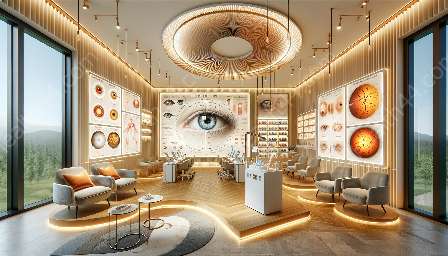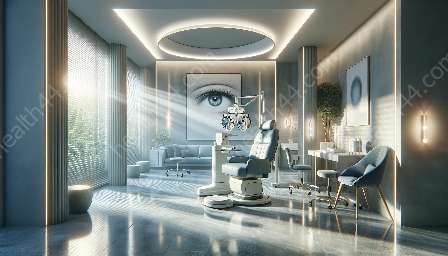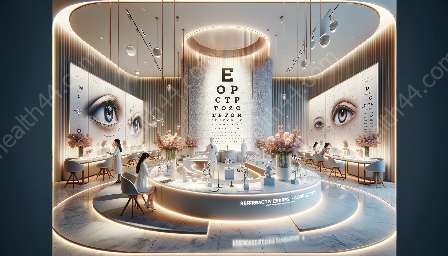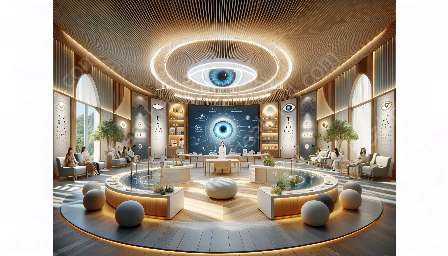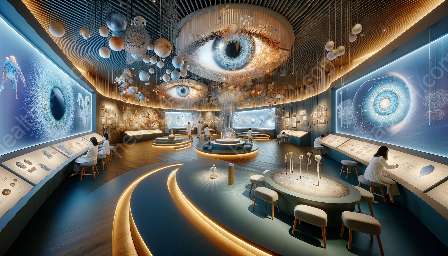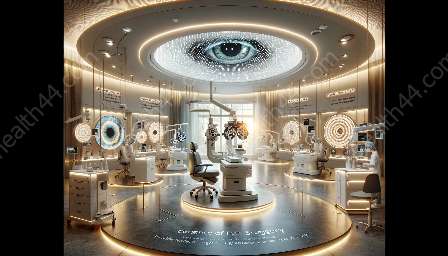Low Vision: A Comprehensive Guide
Vision is one of the most important senses, allowing individuals to experience and navigate the world around them. However, not everyone has a perfect or standard level of vision. Some individuals experience deficits in their eyesight that cannot be corrected with glasses or contact lenses, a condition known as low vision. This topic cluster will discuss low vision in detail, including the causes, symptoms, and available treatments. We will also explore how low vision relates to vision care and overall health, providing insightful information and resources to help individuals dealing with this condition.
The Impact of Low Vision
Low vision is a significant and often life-altering condition that can affect people of all ages. It impairs an individual's ability to perform everyday tasks, such as reading, driving, recognizing faces, and engaging in hobbies or work-related activities. The impact of low vision extends beyond the physical limitations, affecting mental and emotional well-being as well.
Individuals with low vision may experience feelings of frustration, isolation, and dependence on others, leading to a diminished quality of life. Understanding the causes and implications of low vision is crucial in providing support and effective interventions for those affected by this condition.
Causes of Low Vision
Low vision can result from various underlying conditions affecting the eyes, optic nerves, or brain. Some common causes of low vision include:
- Age-related macular degeneration (AMD)
- Glaucoma
- Diabetic retinopathy
- Cataracts
- Retinitis pigmentosa
- Brain injury or stroke affecting the visual pathways
Each of these conditions can lead to different visual impairments, such as loss of central vision, decreased peripheral vision, or difficulty in seeing in low-light conditions. Understanding the specific cause of low vision is essential for guiding treatment and management strategies.
Symptoms of Low Vision
The symptoms of low vision can vary widely depending on the underlying cause and the severity of the condition. Some common symptoms include:
- Blurred or distorted vision
- Difficulty recognizing faces or reading small print
- Loss of peripheral vision
- Sensitivity to light and glare
- Difficulty navigating in dimly lit environments
It's important to note that individuals with low vision may retain some level of visual function, but their ability to perform daily activities may be significantly impaired. Addressing these symptoms and their impact on daily life is crucial in providing appropriate support and care to individuals with low vision.
Diagnosis and Treatment Options
Diagnosing low vision involves comprehensive eye examinations, including visual acuity tests, visual field evaluations, and imaging studies of the eyes and visual pathways. Once diagnosed, individuals with low vision can benefit from a range of treatment options to help maximize their remaining vision and improve their quality of life.
Low vision aids such as magnifiers, high-contrast lenses, and specialized lighting can enhance visual function and improve the ability to perform daily activities. Additionally, vision rehabilitation programs offer training in adaptive skills and assistive technology to optimize independence and functionality for individuals with low vision.
It's important to work closely with eye care professionals and low vision specialists to create personalized treatment plans that address the specific needs and goals of each individual with low vision. Technology and innovation continue to drive advancements in low vision care, offering hope and improved outcomes for those living with this condition.
Low Vision and Overall Health
Understanding the relationship between low vision and overall health is crucial in providing holistic care for individuals with this condition. Low vision can impact various aspects of an individual's well-being, including physical, emotional, and social dimensions.
From a physical perspective, low vision may lead to limitations in performing daily activities, increasing the risk of falls and accidents. Emotional well-being can also be significantly affected, with individuals experiencing frustration, anxiety, and a sense of loss or dependence. Addressing these holistic needs requires a multidisciplinary approach, involving eye care professionals, primary care providers, mental health specialists, and support networks.
Incorporating strategies to promote overall health and well-being, such as regular exercise, proper nutrition, and social engagement, can complement low vision care and improve the quality of life for individuals with this condition. Collaboration among healthcare providers, caregivers, and community resources is essential in providing comprehensive support for those living with low vision.
Empowerment Through Education and Support
Empowering individuals with low vision through education and support is a fundamental aspect of comprehensive vision care. Providing access to educational resources, adaptive technologies, and specialized services can enhance independence and improve the ability to effectively navigate daily life despite the challenges of low vision.
Fostering a supportive and inclusive environment for individuals with low vision is essential in promoting awareness, understanding, and acceptance. Creating opportunities for peer support, advocacy, and community involvement can help individuals with low vision feel validated and empowered, contributing to their overall well-being and sense of belonging.
Conclusion
Low vision is a complex and multifaceted condition that requires a comprehensive approach to care and support. By understanding the impact, causes, symptoms, and available treatments for low vision, individuals and healthcare providers can work together to improve the lives of those affected by this condition. Integrating low vision care with overall health initiatives can enhance the quality of life for individuals with low vision, fostering independence, empowerment, and meaningful engagement in their communities.
For more information and personalized guidance on low vision care, consult with an eye care professional or low vision specialist to explore the options and resources available to support your individual needs and goals.



